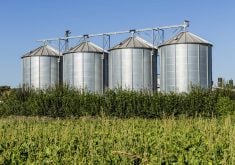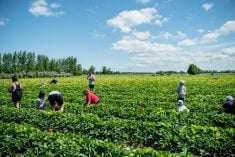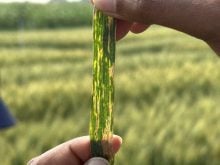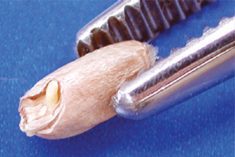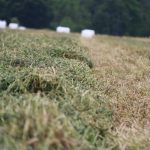107 110 Carberry
Long-Term Fall Rye Yield Data & Variety Description Table
Variety
AC Remington
AC Rifle
Dakota
Hazlet
Prima
Check variety Prima averaged 97 bu./acre over 23 site years
2009 Fall Rye Yield Comparison Table
Yield % of Prima 93
86
100
Variety
AC Remington
AC Rifle
Hazlet
Prima
Check (Prima) Yield in bu./ac CV (%)
LSD %
Significant differences b/n varieties
Read Also

How much nitrogen can farmers really cut?
Manitoba fertilizer trials look for nitrification inhibitor sweet spot, to lower greenhouse gas emissions and cost without hurting yield.
Site
Years Tested
23
23
16
23
23
2009 Average Yield
99
91
113
100
Height (inches) 35
34
42
41
45
Boissevain
101
92
109
100
82 5.4
10
Yes
Lodging
VG
VG
F
G
F
Resistance to:
Shattering
Vg
VG
F
G
F
104
87
118
100
92 8.6
16
Yes
98
93
104
100
93 6.8
–
No
98
92
125
100
82 9.4
18
Yes
Ergot
P
P
P
P
P
Winnipeg
96
91
109
100
99 6.6
–
No
2009 Yield by Test Location Hartney Stonewall
To assist producers with variety decisions this fall, Manitoba Agriculture, Food and Rural Initiatives (MAFRI) and MCVET (Manitoba Crop Variety Evaluation Team) is publishing the most recent variety descriptions and performance data for fall rye, which includes data collected in 2009.
All fall rye varieties available for production in Manitoba have good winter hardiness if no-till seeded into standing stubble. Fall rye is less subject to winterkill than winter wheat, although winter damage can still occur.
Information on height and resistance to lodging, shattering and ergot are presented in the Long-Term Yield Data and Variety Description Table. When looking at the data, the Long-Term Yield column is the best indicator of how a variety will perform over a range of conditions. The “site years tested” column shows the number of sites where the entry has been compared to the check, Prima.
While data from single sites is often more interesting, individual site data, and even data accumulated over numerous sites in a single year must always be viewed with caution. When looking at the Yield Comparison Table, the grey shaded area lists the yield of Prima in bu./ acre below each site. CV is the Coefficient of Variation and it is an indicator of how uniform a trial is; the smaller the CV, the greater the chance that true differences were found between varieties in the trial. LSD stands for Least Significant Difference and it shows the percentage that individual varieties must differ by to be considered significantly different.
A complete data set for all MCVET fall rye sites, along with data for all crops, will be published in Seed Manitoba 2010 this December. Seed Manitoba is a collaborative effort between the Manitoba Seed Growers’ Association, Manitoba Agriculture, Food and Rural Initiatives and the Manitoba Co-operator.



